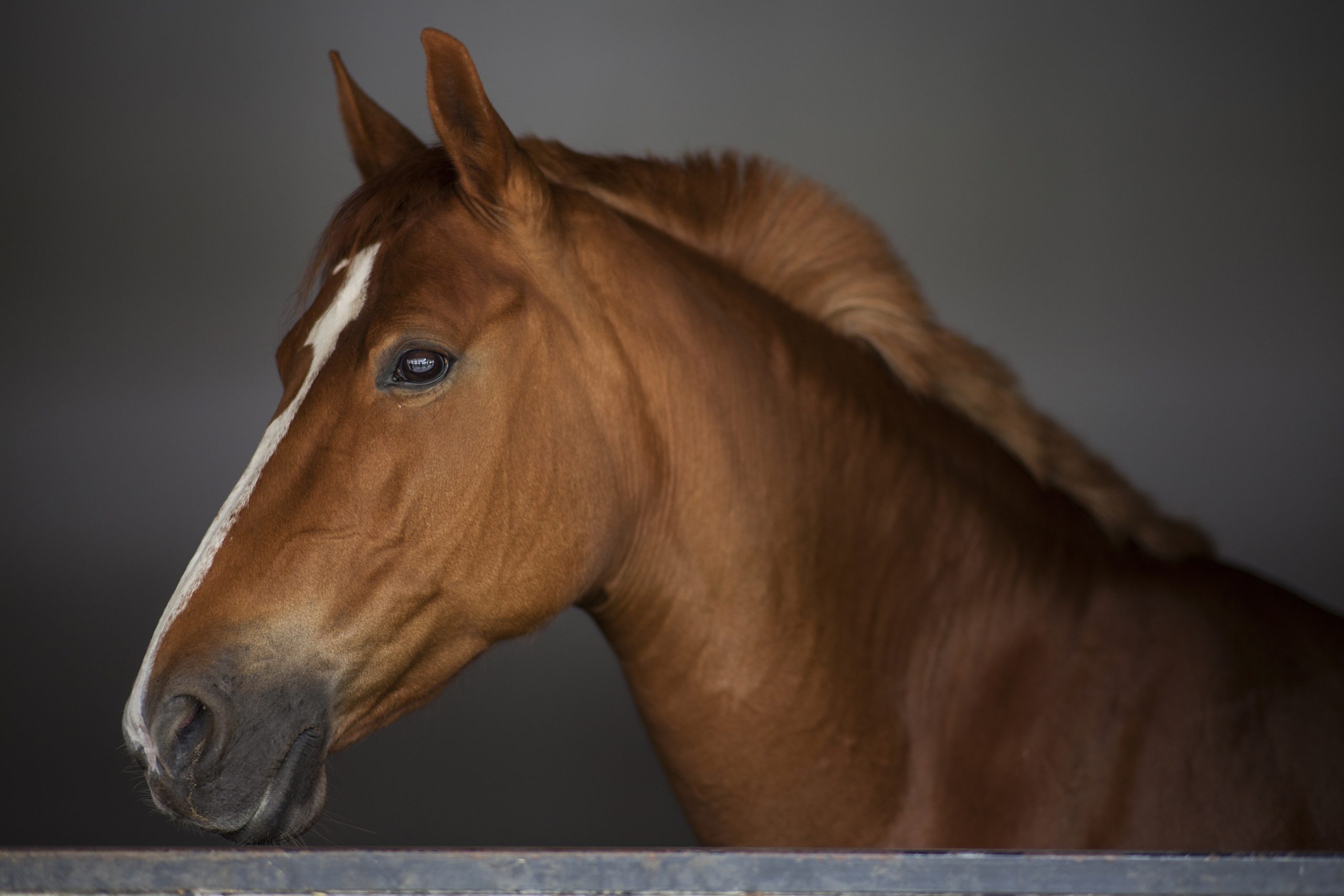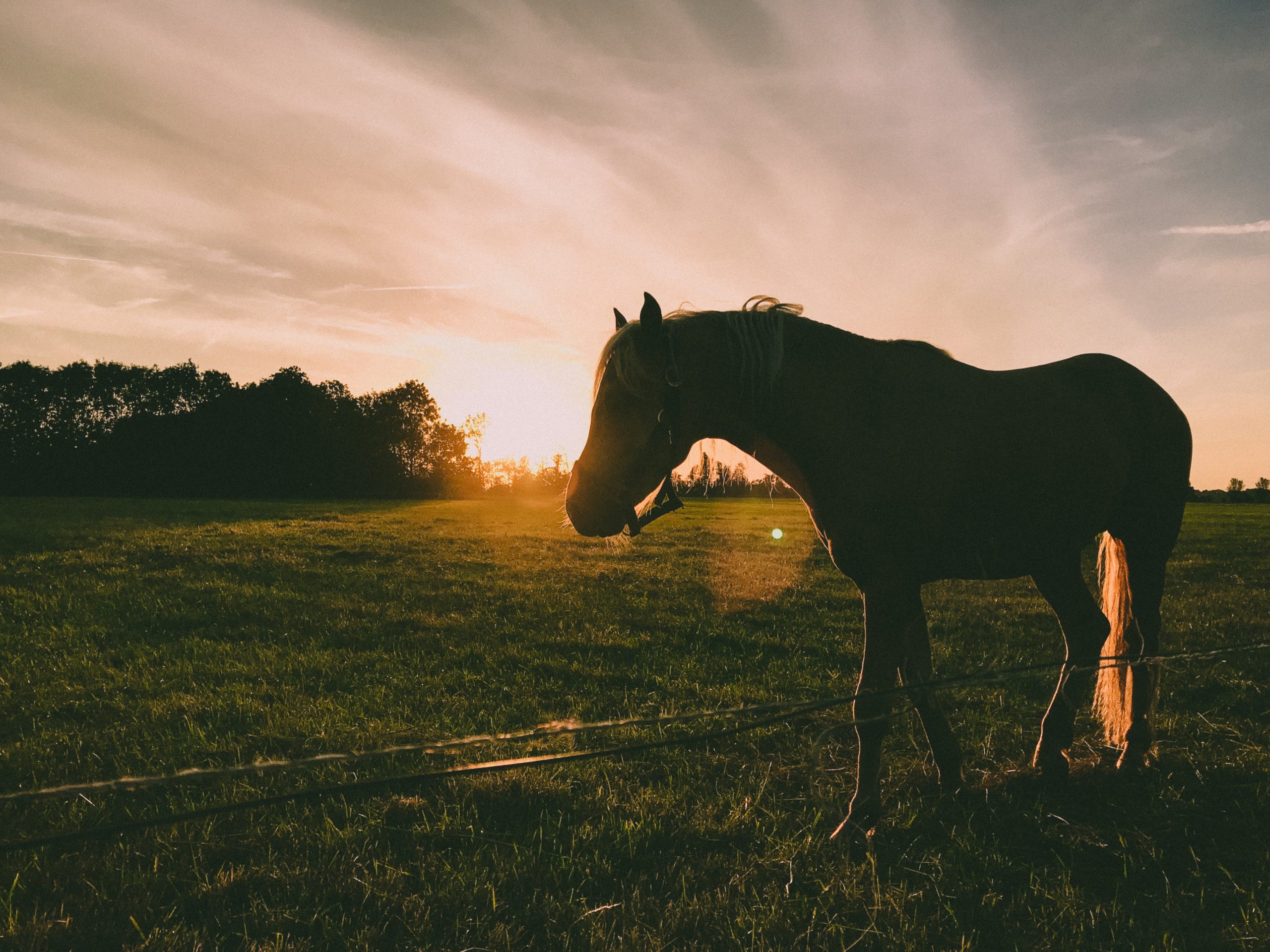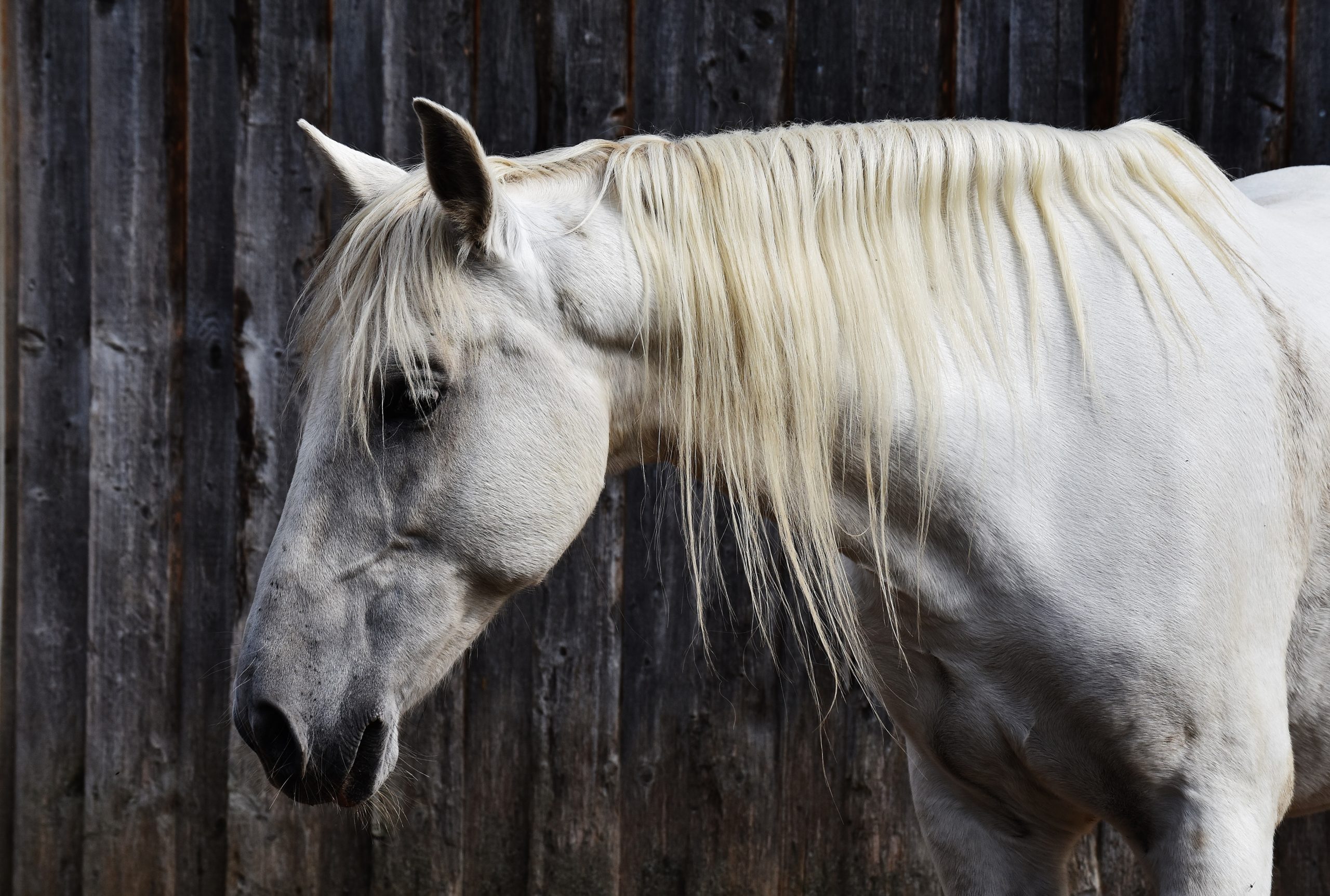Mares should be fed differently during early pregnancy, late pregnancy, and lactation. By understanding the mare’s nutrient needs during each stage of her reproductive cycle, an intelligent and cost effective feeding program can be designed and implemented.
It is important to avoid overfeeding during early pregnancy and underfeeding during lactation.
Also, be aware of differences in nutritional requirements between breeds. Know that the season affects pasture quality and quantity which can drastically affect your mare’s supplementary feed requirements. Make condition scoring a routine and act on the slightest noticeable changes aiming always to keep the mare at a consistent level of healthy body condition.
Stages of pregnancy
A broodmare’s feeding program should be divided into three separate stages. Stage one is early pregnancy, from conception through the first seven months of gestation. Barren mares and pregnant mares without foals by their sides fit into this nutritional category. Stage two encompasses the last trimester of pregnancy, which is from around seven months of pregnancy through foaling. Stage three is lactation, which generally lasts five or six months after foaling.
The nutrient requirements for these three stages differ markedly and adjustments should be made in the mare’s feeding program to accommodate these differences. The most common mistakes made in feeding broodmares are overfeeding during early pregnancy and underfeeding during lactation. The breeder should aim to maintain the mare in optimum condition throughout the year, keeping careful track of fluctuations body condition score and weight. This is referred to as “straight line nutrition” and is the best way of ensuring correct development and growth of the foetus and nutritional health of the mare.
Stage 1: Early Pregnancy
To feed the mare properly during pregnancy, it is important to understand how the foetus develops throughout the gestation period. Contrary to popular belief, the foetus does not grow at a constant rate throughout the entire eleven months of pregnancy. The foetus is very small during the first five months of pregnancy. Even at seven months of pregnancy, the foetus equals only about 20 percent of its weight at birth. At this stage in pregnancy the foetus equals less than two percent of the mare’s weight and its nutrient requirements are miniscule compared with the mare’s own maintenance requirements.
Therefore, the mare can be fed essentially the same as if she were not pregnant at all. An ideal diet may comprise of pasture alone with the addition of a vitamin and mineral supplement to balance nutrient shortfalls in the pasture. Obviously if pasture is poor or scarce, additional hay or chaff should be fed a rate of at least 1-1.5% bodyweight per day or ad libitum throughout pregnancy and lactation if hay quality is average to poor.
All too often, the well-meaning mare owner greatly increases feed intake after the mare is pronounced in foal, reasoning that she is now “eating for two.” This is not only unnecessary, but may lead to obesity and problems at foaling time. Obesity in broodmares is a serious problem, not only affecting the mares’ fertility and ability to conceive, but seriously risking the health of the foetus. Over conditioning your mare at this stage may increase the chances of the foal exhibiting developmental orthopaedic diseases after birth. This is particularly true where pregnant mares have access to high quality pasture during early pregnancy. If pasture quality is high, it may be necessary to restrict grazing by means of stabling or muzzling for part of the day. Access to pasture or hay should not be denied for longer than eight hours at a time to prevent digestive upset.
By the same token, it is very important in early pregnancy that the mare does not go into negative energy balance and loose condition. Owners of picky eaters, poor doers and lactating mares with foals at foot need to be especially vigilant of body condition. Mares in poor condition are at increased risk of pregnancy loss. If a mare is a good milker and pasture is dry and scarce, additional provisions should be made to ensure that she does not begin to loose condition.
Stage 2: Late Pregnancy
After seven months of pregnancy, the foetus begins to develop rapidly. At this point, its nutrient requirements become significantly greater than the mare’s maintenance requirements and adjustments should be made in the mare’s feeding program. Digestible energy (DE) requirements only increase about 15 percent over early pregnancy. Protein and mineral requirements increase to a greater extent. This is because the foetal tissue being synthesised during this time is quite high in protein, calcium and phosphorus. Trace mineral supplementation is also very important during this period because the foetus stores iron, zinc, copper, and manganese in its liver for use during the first few months after it is born. The foetus has developed this nutritional strategy of storing trace minerals during pregnancy because mare’s milk is quite low in these elements.
New Zealand researchers studied the effect of copper supplementation on the incidence of developmental orthopaedic disease in Thoroughbred foals. Copper supplementation of mares was associated with a significant reduction in the physitis (inflammation of the bone growth plates) scores of the foals at 150 days of age. Foals from mares that received no supplementation had a mean physitis score of 6, while foals out of supplemented mares had a mean score of 3.7. A lower score means less physitis. There was no significant effect of copper supplementation of the foals on physitis scores. There was a significantly lower incidence of articular cartilage lesions in foals from supplemented mares. However, there was no significant effect of copper supplementation of the foals on articular and physeal cartilage lesions. The amount of copper consumed per day should total around 175mg per day for a 500kg mare. Remember that some copper (around 50-75mg per day) will be supplied from pasture or alternative forage sources too although amounts depend on pasture or forage quality.
Vitamin A has been found to be of critical importance to the late pregnant mare. Studies by Kathleen Crandell (Kentucky Equine Research Inc.) showed that if mares are maintained on hay alone with no green pasture and no vitamin A supplementation, the subsequent growth rates of their foals is reduced significantly. As hay is stored over a period of weeks and months, it’s vitamin A content is drastically reduced. If pasture is scarce, and the mare relies on hay as her major forage source, supplementation of vitamin A may be necessary to avoid this scenario.
Additionally, selenium and vitamin E supplementation in late pregnancy has been shown in recent research to enhance immunity in both the mare and foal. Antibody levels were higher in foals of mares receiving 3mg selenium and 1600 IU vitamin E /day as opposed to controls (only 1mg selenium and 800 IU vitamin E /day). Selenium may also help the mare by reducing the risk of retained afterbirth as shown in cows.
To ensure that mares are receiving enough copper, vitamin A, selenium and vitamin E in their diets at this stage of pregnancy, choose either pre-mixed feeds or supplements containing appropriate levels of these vitamins and minerals as detailed on the bag or bucket.
Mares in late pregnancy are often overfed energy in attempt to supply adequate protein and minerals to the developing foal. This seems to be especially true of warm-blood and draught horse breeds. If the pregnant mare becomes fat during late pregnancy, she should be switched to a feed that is more concentrated in protein and minerals so that less can be fed per day. This will restrict her energy intake while ensuring that she receives adequate quantities of other key nutrients. Mares in the late stages of pregnancy can be fed either a complete mixed feed designed for broodmares and balanced to provide all the vitamins and minerals required by the mare at this stage or an owner-designed diet in conjunction with a commercially available balancer supplement. Rates of feeding depend on the size and age of the mare and the recommendations for the particular brand of feed.
Remember that many feeds designed for broodmares are formulated with the thoroughbred breeder in mind. Feeding rates for other breeds (especially those breeds renowned for being able to survive on next to nothing) can be significantly lower than levels suggested for thoroughbreds. In fact, some mares can survive on pasture alone with a vitamin and mineral supplement even in late pregnancy and not lose condition without any detriment to the foal. Good horse sense and personal knowledge of the mare and her condition in relation to feeding should always be the first guide when designing feeding schedules. If owners prefer to feed straights, oats are always the first choice grain to feed for energy along with a balancer supplement such as EQUIVIT All-Phase to ensure adequate vitamin and mineral intake.
Stage 3: Lactation
After foaling, the mare’s nutrient requirements increase significantly. During the first three months of lactation, mares produce milk at a rate equal to about 1-4% of their body weight per day. Some mares milk so well that whilst the foal grows quickly strong, the mare begins to loose condition, using her own reserves to supply her foal. This may make it difficult for the mare to conceive again and subsequently retain the foetus due to malnutrition. All efforts should be made to keep the mare in good condition during lactation and this is the time that the art of condition scoring on a regular basis can reap rewards.
Mare milk is rich in energy, protein, calcium, phosphorus and vitamins. Therefore, the mare should be fed enough grain to meet her greatly increased nutrient requirements. Mares in early lactation may require up to 8 kilos of grain per day depending upon the type and quality of forage they are consuming but, as previously mentioned, some mares of particularly well doing breeds can be successful milkers on good pasture and a vitamin and mineral supplement alone. The aim should be to use the best quality forage, and keep grain levels down to avoid potential digestive upset. If straight grains are being used, the grain should be fortified with additional protein, minerals and vitamins to meet the lactating mare’s needs. There are a number of commercially available balancer supplements that can be used to fortify grains, but check labels to ensure adequate intake of each constituent. Again, the grain portion can also be in the form of a complete mixed feed to ensure balanced and convenient nutrition.
Trace mineral fortification is not as important for lactating mares as for late pregnant mares because milk contains low levels of these nutrients and research has shown that adding more to the lactating mare’s diet does not increase the trace mineral content of the milk. Once the foal starts eating from the mares feed bucket, however, a well fortified feed is important to ensure adequate intake of vitamins and minerals by the foal, unless the foal is being creep fed, in which case only the foal’s diet really needs to be supplemented. Calcium and phosphorus are the minerals that should be of primary concern during lactation so lucerne hay is the forage of choice due to its high calcium content.
It may of benefit to the foal to supplement the mare with additional calcium and phosphorus (a supplement such as EQUIVIT Bone Food is ideal) during lactation. Grain intake should be increased gradually during the last few weeks of pregnancy so that the mare is consuming nearly the amount that she will require for milk production at the time that she foals. A rapid increase in grain should be avoided at foaling time because this may lead to colic or founder. After about three months of lactation, milk production begins to decline. At this time, grain intake can be reduced to keep the mare in a desirable condition. It is often beneficial to cut down the mare’s grain ration just prior to weaning to help the mare’s milk to dry up when the foal is taken off.




